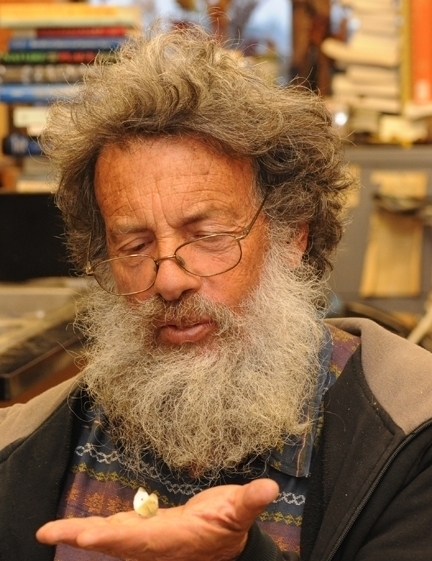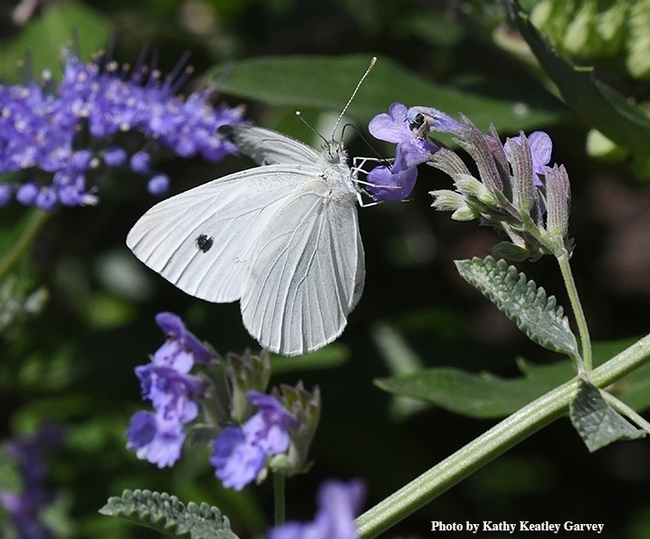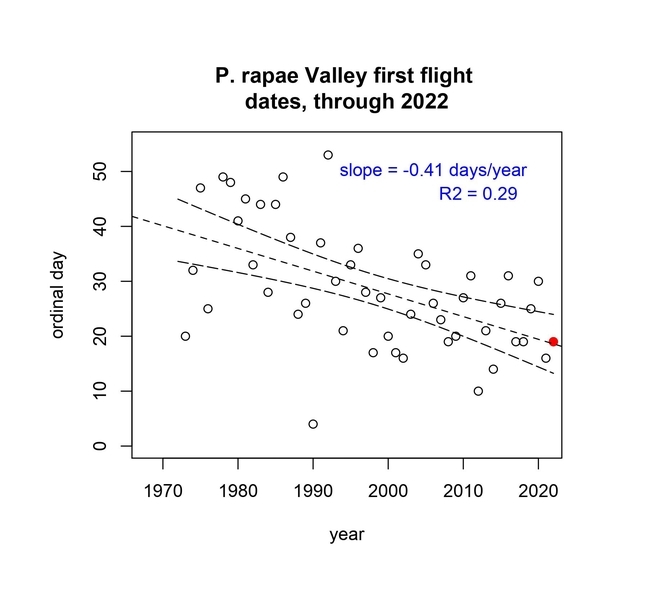
“It's of special interest this year because as of a few days ago the bug was still flying and laying eggs, which will result in non-diapause pupae,” said Shapiro, a noted butterfly expert who researches biological responses to climate change. “Depending on the weather, that could mean an earlier-than-usual emergence. There is even a slight chance the fall brood is not over yet...”
Shapiro, a member of the Department of Evolution and Ecology faculty, has sponsored the “Suds for a Bug” contest since 1972 to determine the Pieris rapae's first flight of the year in the three-county area of Sacramento, Solano and Yolo. He launched the contest as part of his long-term studies of butterfly life cycles and climate change.
P. rapae is emerging earlier and earlier as the regional climate has warmed, said Shapiro. "Since 1972, the first flight of the cabbage white butterfly has varied from Jan. 1 to Feb. 22, averaging about Jan. 20."
Shapiro, who has monitored butterfly populations of central California since 1972 and maintains a research website at http://butterfly.ucdavis.edu/, says the point of the contest "is to get the earliest possible flight date for statistical purposes. The rules require that the animal be captured and brought in alive to be verified. That way no one can falsely claim to have seen one or misidentify something else as a cabbage white."
The contest rules include:
- It must be an adult (no caterpillars or pupae) and be captured outdoors.
- It must be brought in alive to the Department of Evolution and Ecology office, 2320 Storer Hall, UC Davis, during work hours, 8 a.m. to 5 p.m., Monday through Friday, with the full data (exact time, date and location of the capture) and the contact information of the collector (address, phone number and/or e-mail.) The receptionist will certify that it is alive and refrigerate it. (If it's collected on a weekend or holiday, it can be kept in the refrigerator for a few days--do not freeze it.)
- Shapiro is the sole judge.
The professor said P. rapae inhabits vacant lots, fields and gardens where its host plants, weedy mustards, grow. The male is white. The female is often slightly buffy; the "underside of the hindwing and apex of the forewing may be distinctly yellow and normally have a gray cast,” Shapiro said. “The black dots and apical spot on the upperside tend to be faint or even to disappear really early in the season.”
Shapiro, who monitors butterfly populations in the field for more than 200 days of the year, usually wins the contest. He has been defeated only four times and those were by UC Davis graduate students. Adam Porter won in 1983; Sherri Graves and Rick VanBuskirk each won in the late 1990s; and Jacob Montgomery in 2016. The first three were his own graduate students.
A fellow of the American Association for the Advancement of Science, the Royal Entomological Society and the California Academy of Sciences, Shapiro is the author of A Field Guide to Butterflies of the San Francisco Bay and Sacramento Valley Regions, illustrated by Tim Manolis and published in 2007 by the University of California Press
Recent Beer-for-a-Butterfly Contest statistics:
- 2022: No official contest due to the COVID pandemic, but Shapiro recorded his first-of-the-year P. rapae at 1:25 p.m. on Jan. 19 in West Sacramento, Yolo County
- 2021: No official contest due to the COVID pandemic, but Shapiro collected his first-of-the-year at 1:55 p.m. Jan. 16 on the UC Davis campus, Yolo County
- 2020: Technically, no winner, as Shapiro did not collect the one he spotted in Winters, Yolo County at 11:16 a.m. on Jan. 30 at the Putah Creek Nature Park. "It flew back and forth across Putah Creek and then departed the area, flying out of reach above the trees," he noted. He waited around for 90 minutes to see if it would return. It did not.
- 2019: Shapiro collected the first cabbage white butterfly near the Suisun Yacht Club, Suisun City, Solano County, at 1:12 p.m., Friday, Jan. 25. "It was the earliest recorded in Suisun City in 47 seasons."
- 2018: Art Shapiro collected the winner in West Sacramento
- 2017: Jan. 19: Art Shapiro collected the winner on the UC Davis campus
- 2016: Jan. 16: Jacob Montgomery collected the winner in west Davis
- 2015: Jan. 26: Shapiro collected the winner in West Sacramento
- 2014: Jan. 14: Shapiro collected the winner in West Sacramento
- 2013: Jan. 21: Shapiro collected the winner in West Sacramento
- 2012: Jan. 8: Shapiro collected the winner in West Sacramento
- 2011: Jan. 31: Shapiro collected the winner in Suisun
- 2010: Jan. 27: Shapiro collected the winner in West Sacramento
Shapiro nets many of the winners in mustard patches near railroad tracks in West Sacramento, Yolo County.
As a caterpillar, the insect is a pest of cole crops such as cabbage. UC Statewide Integrated Pest Management Program (UC IPM) says the cabbageworm is active throughout the year in California. "Cabbageworm larvae chew large, irregular holes in leaves, bore into heads, and drop greenish brown fecal pellets that may contaminate the marketed product. Seedlings may be damaged, but most losses are due to damage to marketed parts of the plant," according to the UC IPM website.
Related Link:
Research Publication on Non-Diapause Overwintering Cabbage White Butterfly and Anise Swallowtail
Non-Diapause Overwintering by Pieris rapae (Lepidoptera: Pieridae) and Papilio zelicaon (Lepidoptera: Papilionidae) in California: Adaptiveness of Type III Diapause-Induction Curves by Art Shapiro, published in 1984 in Psyche: A Journal of Entomology (open access article)
First paragraph: "Diapause is generally regarded as a physiological adaptation which increases the probability of surviving the adverse season, and thus of reproducing after it is over. Many insect species show geographic differences in the environmental regimes which induce or inhibit diapause (e.g., critical photoperiod) and in the strength of the diapause induced. Such interpopulational differences are commonly viewed as "fine tuning" to local climates, accomplished by natural selection and reflecting a genetic basis (e.g., Istock, 1981). Intrapopulational differences in photoperiodic sensitivity and diapause strength (e.g., chilling requirement) also occur, and have been interpreted as polymorphisms which "spread the risk" of environmental uncertainty over the population (cf. Bradshaw 1973, Shapiro 1979, 1980a). In multivoltine insects in seasonal climates, offspring produced by the last seasonal generation of adults are commonly induced to enter diapause by specific combinations of environmental factors; in mid-latitudes these are likely to be decreasing photophase/increasing scotophase and decreasing or consistently low night temperatures. Warmer nights tend to shorten the critical photoperiod for a given population, or may effectively inhibit diapause altogether under field conditions." (See more)
Attached Images:

A cabbage white butterfly, Pieris rapae, nectaring on catmint (Nepeta) in Vacaville, Calif. (Photo by Kathy Keatley Garvey)

Matt Forister, the Trevor J. McMinn Endowed Professor in Biology, Foundation Professor, at the University of Nevada (and a former graduate student of Aat Shapiro's) created this graph showing the first flights of Pieris rapae.